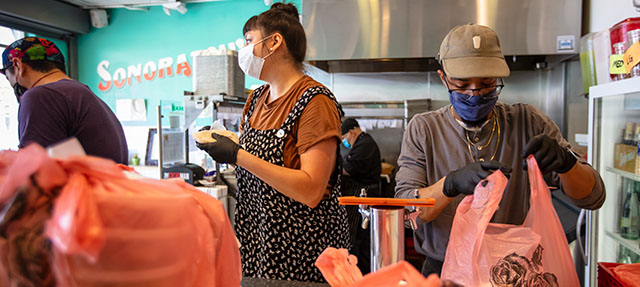Workers across the state are feeling the effects of the recession as California’s job market continues its slow path to recovery. The pandemic and its resulting economic downturn led to severe cuts for face-to-face service sectors, but job loss has hit many industries and affected all regions in the state. With a rise in coronavirus cases and slower job growth than many expected, only a few California metro areas have recovered more than 50% of jobs lost during the height of the pandemic.
Statewide unemployment is at 11%—still significantly higher than February’s 3.9%—driven largely by a 15.1% rate in the populous Los Angeles metro. A few inland areas also exceed the statewide rate—Bakersfield at 12.4% and Visalia at 12.2%—but are lower than Los Angeles, a pattern that differs from prior recessions. Typically, the Bay Area and far northern metros have the lowest unemployment rates, and this remains true with Redding, San Francisco, San Jose, and Napa among the metros below 8%.
At the start of the downturn, California lost 15% of its jobs. Losses were even greater in Anaheim, San Francisco, Los Angeles, and Oakland. Given the sharp drop in employment early in the pandemic, and the slow recovery since, large metros have many jobs to make up. Overall, the state regained 38% of lost jobs between April and September, ranging from a 27% rise in Oakland to 42% in Sacramento. This is meaningful growth over a short period, but the pace has slowed in recent months.
Hardest hit sectors have been slower to recover, especially in metro areas where other workers can work from home. In San Francisco and San Jose, employment within these sectors is down more than 30% since before the pandemic, while in Anaheim and Los Angeles these sectors are down slightly less at 27%–28%. The decline is substantially less in San Diego at 22%.
Job loss at the start of the pandemic was severe in many smaller metros as well, with losses exceeding 17% in Modesto, Salinas, San Luis Obispo, and San Rafael. However, many have regained jobs more quickly than large metros between April and September. On average, gains in Salinas, San Rafael, Santa Maria-Santa Barbara, and Modesto metros constitute about 43% of job growth needed to make up for earlier losses. Medium metros like Hanford, Merced, Napa, Santa Cruz, and Yuba City have been slower, adding less than 30% of the jobs needed for full recovery. Redding and Madera are the only two metro areas that recovered at least 50% of jobs.
Unless the pace of job recovery accelerates, employment rates are unlikely to return to pre-pandemic levels over the coming months. The resurgence of coronavirus in late fall may now jeopardize the continued recovery of jobs lost in March and April. National data suggest that long-term unemployment is on the rise, highlighting the urgency for state and federal action to support workers, businesses, and households and accelerate labor market recovery.





